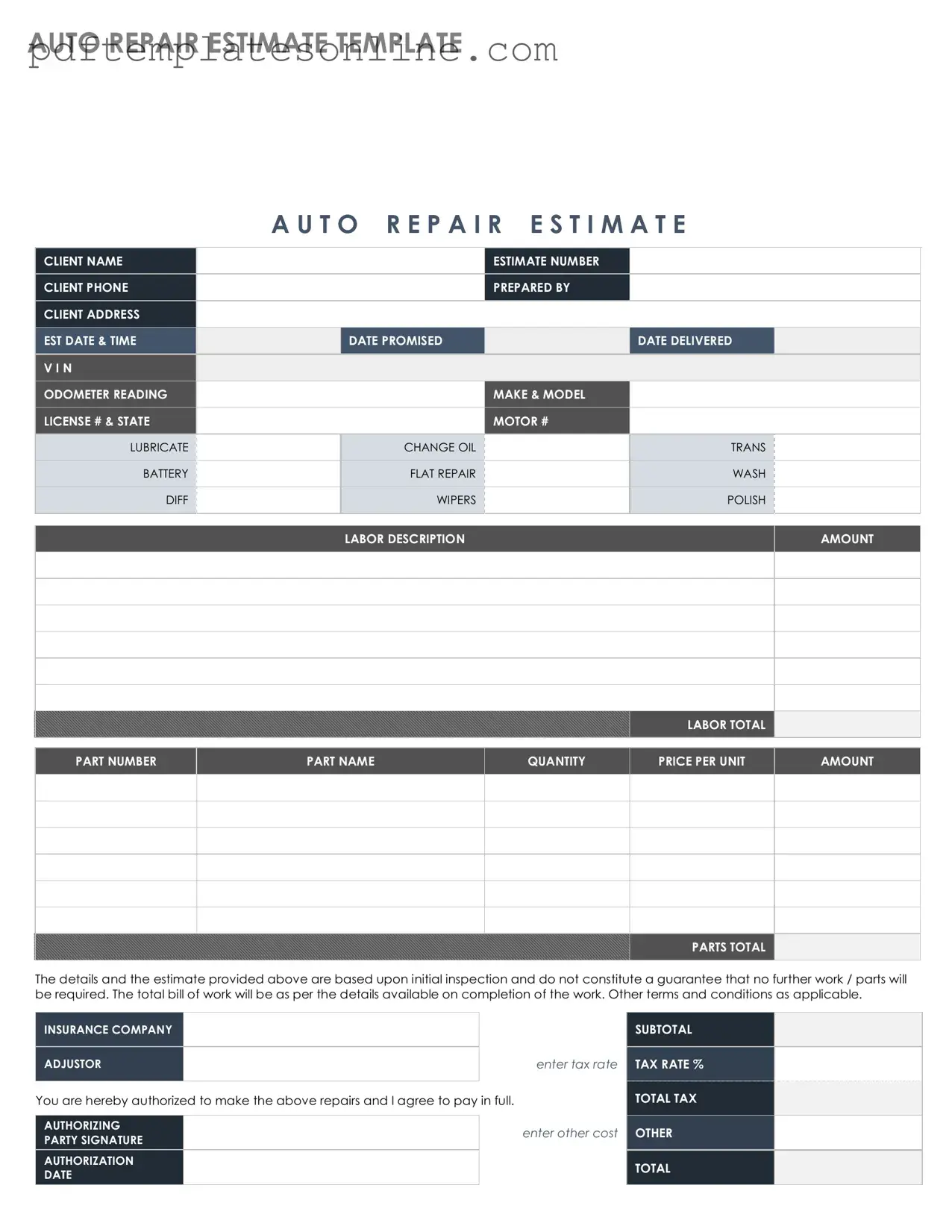Filling out an Auto Repair Estimate form may seem straightforward, but many people make common mistakes that can lead to misunderstandings or delays in the repair process. One frequent error is failing to provide complete contact information. If the repair shop cannot reach you, it could slow down the entire process. Always ensure your phone number and email address are accurate.
Another common mistake is neglecting to describe the vehicle's issues in detail. Simply stating "the car won't start" does not give the technician enough information to diagnose the problem effectively. Include specific symptoms, such as strange noises or warning lights, to help the mechanic understand what to look for.
People often forget to include the vehicle identification number (VIN). This number is crucial for the shop to access the vehicle's history and specifications. Without it, the shop may struggle to provide an accurate estimate, leading to potential delays in repairs.
Inaccurate mileage is another frequent oversight. Providing the wrong mileage can affect the estimated wear and tear on the vehicle. Always double-check the odometer reading before submitting the form to ensure that it reflects the current condition of the vehicle.
Many individuals skip the section for preferred repair methods or parts. If you have specific preferences, such as wanting original manufacturer parts instead of aftermarket options, make sure to indicate this clearly. Otherwise, the shop may proceed with repairs that do not align with your expectations.
Another mistake is not asking questions before submitting the form. If you're unsure about any part of the estimate process, it’s important to seek clarification. This can prevent misunderstandings later on and help you feel more confident in your decisions.
People sometimes overlook the importance of providing a timeline for repairs. If you have a deadline, such as needing the car for work, communicate this clearly. This information can help the repair shop prioritize your vehicle and manage their schedule effectively.
Some individuals fail to sign and date the form. An unsigned estimate may not be considered valid by the repair shop. Take a moment to review the form and ensure that all necessary signatures are included before submission.
Another error is not keeping a copy of the completed form for personal records. Having a copy can be invaluable for tracking the repair process and for future reference. This simple step can save time and confusion later.
Lastly, many people neglect to review the estimate for accuracy before submitting it. Take a few moments to read through the entire form to catch any mistakes. This diligence can help avoid complications and ensure a smoother repair experience.
